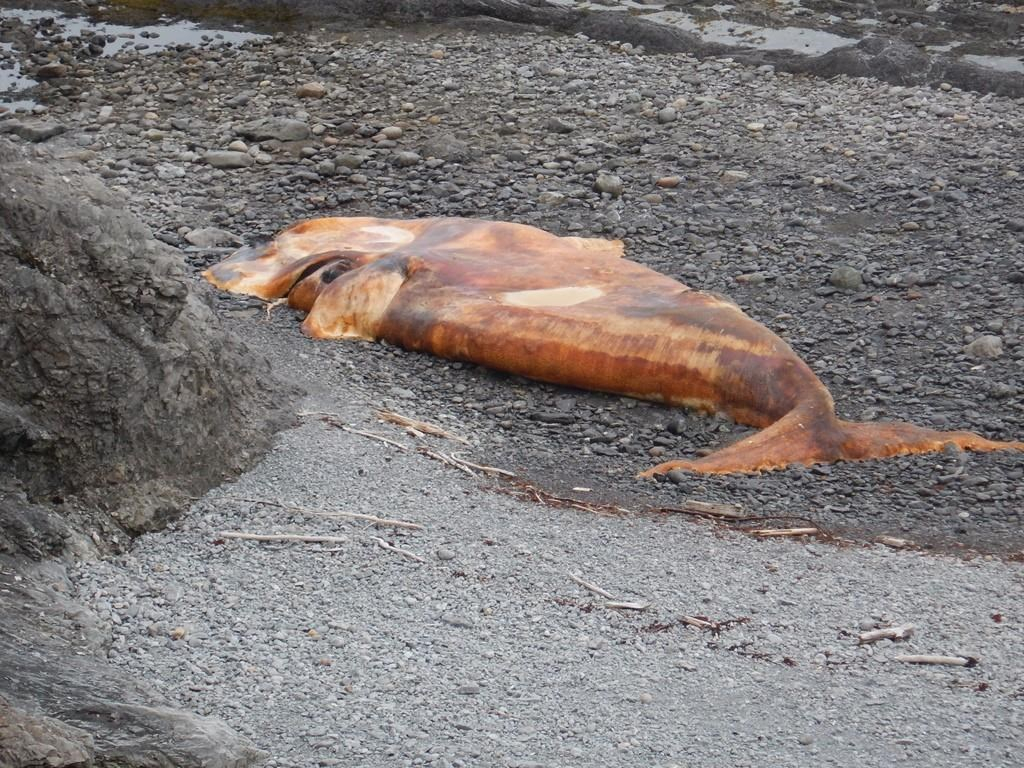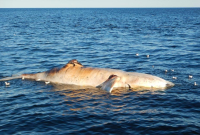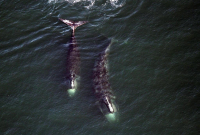Support strong Canadian climate journalism for 2025
Yet another endangered North Atlantic right whale has been found dead in the Gulf of St. Lawrence — the tenth since June 7.
The federal Department of Fisheries said on Twitter that the "unprecedented number of right whale deaths is very concerning."
The most recent find was reported Tuesday from the west coast of Newfoundland, though it remains unclear when the whale was first spotted.
North Atlantic right whales are critically endangered, with an estimated number of just over 500.
Jerry Conway of the Canadian Whale Institute in Campobello, N.B., said the deaths are disastrous for an already vulnerable species.
"We feel there is tremendous urgency," he said Wednesday in an interview. "This has had catastrophic ramifications on the right whale population, this number of whales being killed when we only know of three calves being born this year.
"It certainly indicates a rapid decline in the population."
Fisheries officials say four of the carcasses were found off Newfoundland's west coast. They were discovered near Chimney Cove south of Trout River, Cape Ray in the Port Aux Basques region, Cedar Cove near Lark Harbour and one south of the River of Ponds.
"While we continue to work on confirming the identities of all four of these whales, we can confirm that at least two of them are new specimens not among the previously identified eight North Atlantic right whales spotted in the Gulf of St. Lawrence this summer," the department said in a news release.
Necropsies, akin to animal autopsies, are underway on samples taken from the badly decomposed remains to help confirm causes of death, it said.
The department said it has also taken several steps to help protect right whales. They include closing a snow crab fishing zone in the southern Gulf of St. Lawrence and asking gulf fishermen to report any whale sightings. Mariners have been asked to voluntarily cut speed along the Laurentian channel in shipping lanes between the Magdalen Islands to the Gaspe peninsula until Sept. 30.
It has long been known that collisions with ships and getting tangled in fishing gear are major threats for right whales.
A big question is whether the massive yet acrobatic mammals, which can reach 18 metres in length and live at least 75 years, have shifted habitat. Traditional feeding grounds include the Bay of Fundy and Roseway Basin but the whales have been appearing over the last five years in the gulf.
Conway said moving shipping lanes to the east in the Bay of Fundy helped reduce ship strike potential by 90 per cent.
Wayne Ledwell, head of Whale Release and Strandings in Newfoundland and Labrador, said the open-mouth feeders are in the gulf for a simple reason: to chase food.
"If it's up in the Strait of Belle Isle or up off the Gaspe and the St. Lawrence that's where they're going to go, and I guess that's where a lot of them are right now. But obviously it's a dangerous place to be up there."
Restricting fishing areas can be dicey as migration patterns and whale travel varies each season, Ledwell added. He stressed that fishermen work with his group to help free whales, but said the threat of fishery shut-downs could have unintended consequences for right whales, humpbacks and other species if fewer entanglements are reported.




Comments